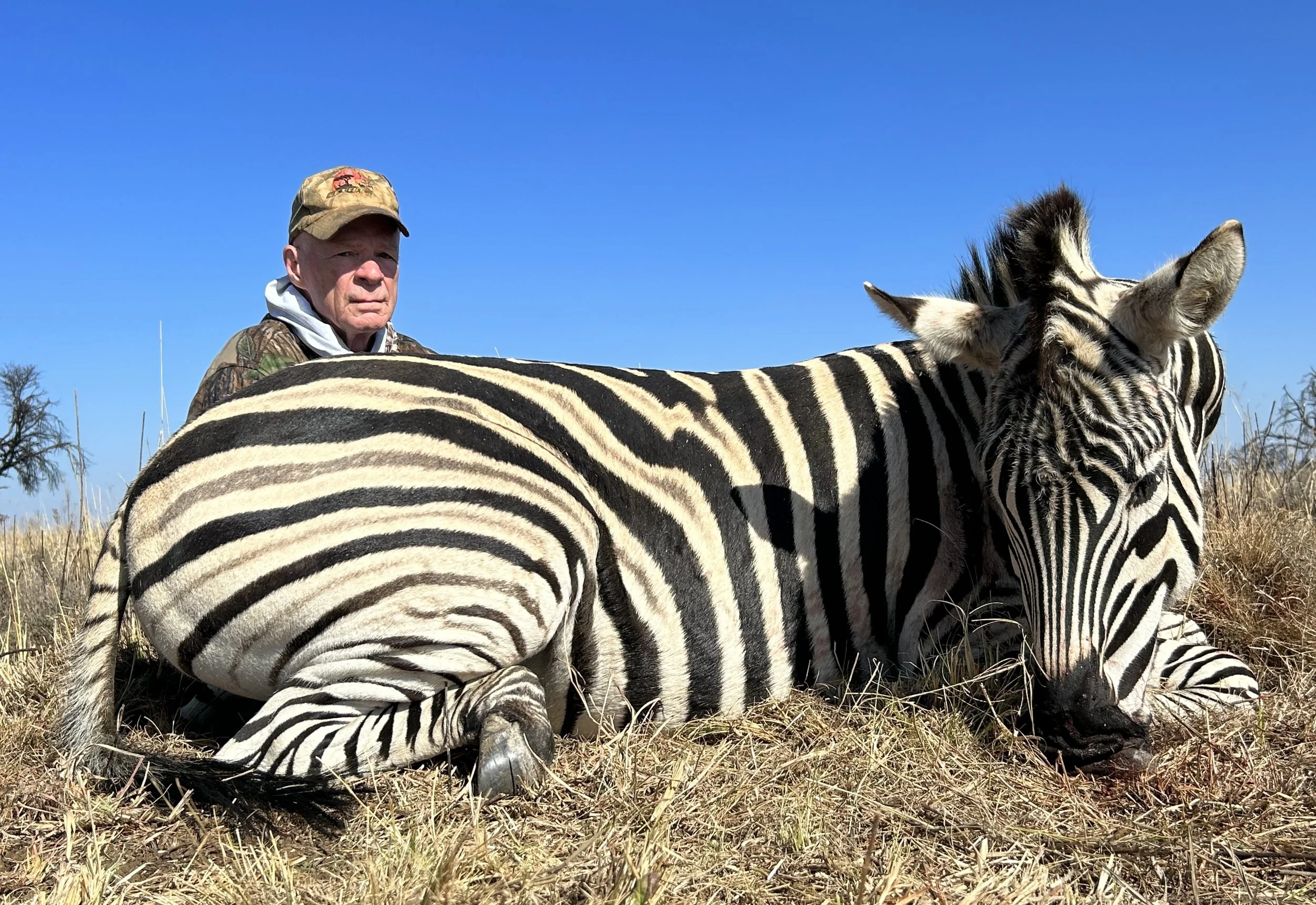Hunting Bullet Metrics
Apply Terminal Performance Truth
“Time to death after a bullet enters the boiler room is the only conclusive measurement of terminal performance.” – Scott Fletcher
This report presents the observations, data, analyses, and conclusions of a self-funded zebra management hunt conducted in South Africa in July of 2023. The hunt’s primary purpose was to determine if the wound-cavity concepts and metrics quantified by personal synthetic gel testing and a personal analytical model, called the Guppy, could empirically predict a bullet’s field wounding, penetration, and meat damage. The wound-cavity concepts had been presented prior to the hunt within the eBook’s storyline.
In the early 1900’s, Colonel Townsend Whelen of the US Army Ordinance Corps had postulated the killing power of a bullet depended entirely on the volume of the wound it created. This opinion was confirmed in the 1970’s by Colonel Martin Fackler, a physician in the US Army Medical Corps, with research testing performed in ordinance gel. Colonel Fackler’s gel testing is the basis for the personal Guppy model and gel-test metrics presented in this website.
On prior plains-game trophy hunts, wounding from kill shots on the shoulder through the boiler room from a 300-grain bullet shot from a 375 H&H had resulted in a consistent range of travel distances. Bullet penetrations typically either passed through the animal or were occasionally retained by the far-side hide. Gel testing of the 300 grainer as well as a variety of 30-caliber bullets fired from a 300 Winchester indicated that a 200-grain, 30-caliber bullet had achieved Guppy-metric wounding and penetration values comparable to the .375-caliber, 300 grainer.
Bullets selected for a management hunt should produce an acceptable volume of bloodshot meat. A 165-grain, 30-caliber bullet fired on the shoulder by a 308 Winchester has an established African field performance of low-volume bloodshot meat. This chambering-bullet combination was also gel tested. A Guppy metric-value comparison indicated the 200-grain, 30-caliber bullet could also potentially produce an acceptable volume of bloodshot meat, to be judged by an experienced Professional Hunter (PH).
These pre-hunt gel tests and Guppy metric-value comparisons indicated a 200-grain, 30-caliber bullet fired from a 300 Winchester could potentially match both the field wounding with attendant travel-distance range and the penetration of a 300-grain, .375-caliber bullet fired from a 375 H&H, but without the prospect of excessive meat damage. Field and skinning-shed autopsy data would be required to validate such empirical terminal performance predictions.
The field and skinning-shed data confirmed the 30-caliber, 200 grainer produced wounding and penetration comparable to the .375-caliber, 300 grainer, with the degree of bloodshot meat on the shoulder considered acceptable by a Professional Hunter with 25 years of experience. An abstract summarizing the report’s content can be found on page 2. The ten hunt objectives are identified in report section 5.0 found on page 6, and the four specific terminal performance criteria all 30-caliber candidate bullets had to meet are presented and discussed in report section 8.0, beginning on page 10. Summary conclusions that sequentially address each of the ten hunt objectives can be found in section 13.0, beginning on page 70.
The report’s table of contents and text can be accessed by clicking on the links below, as can the report’s tables, photos, and graphs. This website is configured to allow topics of interest or the entire report to be downloaded and printed, accessed from the browser’s tool bar.
